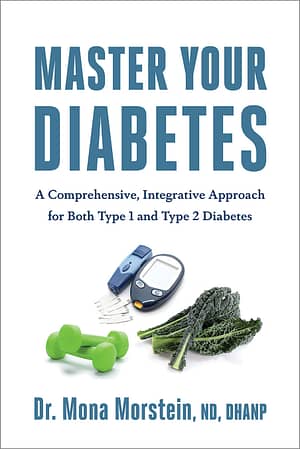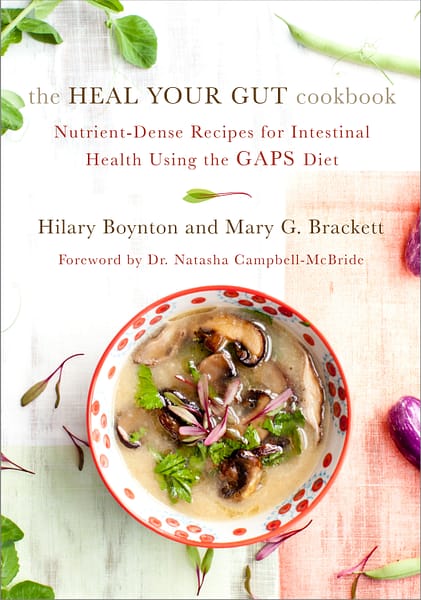Master Your Diabetes: Understanding Carbohydrates

The evidence is clear: We are in the midst of a worldwide diabetes epidemic. In the United States alone, one in three Americans is either diabetic (29 million patients) or prediabetic (87 million patients), costing an annual $242 billion in medical treatments.
An integrative approach based on the “eight essentials” of treatment and prevention will empower you to take control of your condition and continue living full, active, enjoyable, and long lives.
The following excerpt is from Master Your Diabetes: A Comprehensive, Integrative Approach for Both Type 1 and Type 2 Diabetes and highlights one of the “eight essentials” (a low-carb diet, exercise, good sleep, stress management, healing the gut, detoxification, supplementation, and medications) and has been adapted for the web.
Eating large amounts of carbs over time can limit your body’s ability to metabolize them, especially if you have diabetes.
What exactly are carbohydrates? Carbohydrates are biological molecules consisting of carbon, hydrogen, and oxygen atoms, but we also use the term as shorthand for foods that contain a lot of starches or sugars. People with diabetes need to be strict in eliminating high carbohydrate foods from their diets because even small amounts of these foods can pose big problems for regulating glucose levels. A low-carb diet means restricting carbohydrates to less than 45 grams per day, and even down to 20 grams per day, depending on your daily caloric intake.
Reading Nutrition Labels
Carbohydrates are listed on nutrition labels as total carbohydrates, fiber, and sugar. A diabetic patient reading a nutrition label only needs to take into account total carbohydrates minus fiber, as fiber is not absorbed into the body and so does not raise glucose levels. The result equals how many carbs will be absorbed by your intestine and affect your glucose level.
We do not focus on the sugar content of the label, because it is not helpful to us. If a label says each serving of food contains “19 grams of total carbohydrates, 1 gram of fiber, 4 grams of sugar,” and a diabetic patient does not understand how to interpret that label, he might feel it is safe to eat because the sugar content is fairly low. In reality, what that label says is: Of the 19 grams of total carbohydrates, we can subtract 1 gram because it is fiber, for a total carbohydrate content of 18 grams. Of those 18 grams, only 4 are “sugars,” but the rest of the 14 grams will also raise the glucose. So, looking at total carbohydrate grams minus fiber is the only math I want patients to do—it represents all the carbs, starches, and sugars combined. That is the total carbohydrate intake of the serving of food, and what will affect their glucose.
Best Time of Day for People with Diabetes to Eat Carbs
On a low-carb diet, you want to eat fewer carbs in the morning due to the natural glucose elevation that occurs via the dawn phenomenon. Your physician can help you figure out your specific carb intake. Morning intake of fewer than 10 grams is best.
The higher the carb intake—up to 45 grams a day as the limit ideally—the more one should eat at lunch. Higher carbs in the morning can be a problem, and having a lot of carbs for supper can also increase your fasting glucose the next morning. With lunch, a patient can still be up and active, and more effectively burn off the glucose produced by the carbs.
The good news about pulling back on your intake of carbohydrates is that these are what drive your insulin resistance and interfere with good appetite control. Even though this diet sounds difficult, within a week, diabetic patients immediately see their appetite decreasing and smaller amounts of food filling them up.
Which Carbs to Eat (And Not to Eat)
Grains
Grains are complex carbohydrates, and those carbs will raise your glucose levels substantially. Diabetic patients should avoid anything made from a grain, including wheat, oats, rice, quinoa, millet, barley, and others.
Instead of grains, I recommend patients use nut flours, coconut flours, cauliflower, and other vegetables to make alternative “grain” products like muffins, breads, pancakes, noodles, waffles, pizza crust, granola—everything a person with diabetes wants to eat, but should not in their basic grain form.
Fats
Fats, such as animal fats and those found in oils, are excellent for patients with diabetes, as they are not and do not contain carbs, and do not break down into sugar. They can be used for calorie intake, satiation of appetite, and increasing the flavor and mouth feel of foods, all without any risk of raising glucose levels.
Fruit
Most fruits are way too high in carbohydrates to be eaten by those with diabetes; an apple has 20 grams, for example, and a banana up to 34 grams. Berries have the lowest amount, but even a half cup of blueberries still has around 8–10 grams of carbs. In general, patients with diabetes should avoid fruits except for avocados, cucumbers, and a small amount of tomatoes.
Vegetables
All vegetables contain some carbohydrates, but most have little effect on glucose levels and many can be eaten and enjoyed by individuals with diabetes. I recommend eating at least three and up to nine cups a day—though nine cups is probably too high a goal for most people. Vegetables can be purchased either fresh or frozen, but I do not recommend canned or boiled vegetables, and no iceberg lettuce.

It’s important to eat lots of leafy greens. These vegetables contain omega-3 oils, magnesium, potassium, calcium, and other nutrients that can reduce insulin resistance, increase antioxidants, decrease inflammation, and increase nutrient intake.
Cruciferous vegetables—broccoli, cauliflower, brussels sprouts, radish, and cabbage—are also especially healthy. These help the liver work better, and since insulin resistance begins in the liver, and many overweight Type 2 diabetes patients also have fatty livers, supporting liver function via food is a good idea. Though not a cruciferous vegetable, artichokes help the liver produce and secrete bile, which aids in fat digestion.
Vegetables to avoid include white potatoes, yams, sweet potatoes, tomato paste, and corn. These will significantly raise glucose levels. Tomatoes, carrots, and onions can be eaten, but not too many at one time.
Fermented Foods
I recommend patients eat fermented foods, as they are invaluable for healing the gut lining and enhancing our intestinal microbiome, the beneficial bacteria that make us healthier overall. A healthier gut reduces autoimmunity and systemic insulin resistance, enables easier weight loss, and helps our bodies and minds in many ways. Societies all over the world include fermented foods in their diets, as do many Western countries. Fermented foods are frequently made from vegetables or proteins, and include sauerkraut, kimchi, dill pickles, black garlic, yogurt, miso soup, and fermented fish.
Recommended Reads
The Science Behind Food Preferences: More Than a Matter of Taste
Recent Articles
Nothing says “spring” like a fresh, foraged meal! Savor the flavors of the season with this Milkweed Bud Pizza recipe.
Read MoreWhat’s so great about oyster mushrooms? First, you can add them to the list of foods that can be grown indoors! They are tasty, easy to grow, multiply fast, and they love a variety of substrates, making oyster mushrooms the premium choice. The following is an excerpt from Fresh Food from Small Spaces by R. J.…
Read MoreWant to start your own medicinal herb garden? Passionflower, lemon balm, and goldenseal are great places to begin! These herbs are jam-packed with medicinal properties and easy to grow in a majority of climates.
Read More









